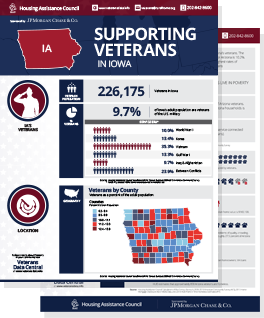About The Data
GEOGRAPHIC TERMS AND CONCEPTS
Office of Management and Budget (OMB) Defined Metropolitan and Micropolitan Statistical AreasV
The United States Office of Management and Budget (OMB) defines Metropolitan and Micropolitan statistical areas according to published standards that are applied to Census Bureau data. The general concept of a Metropolitan or Micropolitan statistical area is that of a core based statistical area (CBSA) containing a substantial population nucleus, together with adjacent communities having a high degree of economic and social integration with that core. Currently defined Metropolitan and Micropolitan statistical areas are based on application of 2010 standards. Current Metropolitan and Micropolitan statistical area definitions were announced by OMB effective February 28, 2013.
The 2010 standards provide that each CBSA must contain at least one urban area of 10,000 or more population. Each metropolitan statistical area must have at least one urbanized area of 50,000 or more inhabitants. Each micropolitan statistical area must have at least one urban cluster of at least 10,000 people but a population of less than 50,000.
Under the standards, the county (or counties) in which at least 50 percent of the population resides within urban areas of 10,000 or more population, or that contain at least 5,000 people residing within a single urban area of 10,000 or more population, is identified as a "central county" (counties). Additional "outlying counties" are included in the CBSA if they meet specified requirements of commuting to or from the central counties. Counties or equivalent entities form the geographic "building blocks" for metropolitan and micropolitan statistical areas throughout the United States and Puerto Rico. The basic categories of the 2010 OMB Metropolitan classifications include:
Metropolitan Statistical Areas: Metropolitan Statistical Areas have at least one urbanized area of 50,000 or more population, plus adjacent territory that has a high degree of social and economic integration with the core as measured by commuting ties.
Micropolitan Statistical Areas: Micropolitan Statistical Areas – a relatively new set of statistical areas – have at least one urban cluster of at least 10,000 but less than 50,000 population, plus adjacent territory that has a high degree of social and economic integration with the core as measured by commuting ties.
Outside Core Based Statistical Areas (Outside CBSA): Areas not included in Metro or Micropolitan Statistical Areas.
HAC’s Rural & Small Town Tract Designation
Given the changes and shortcomings to traditional definitions used to identify rural areas, HAC developed a sub-county designation of rural and small-town areas which incorporates measures of housing density and commuting at the Census tract level to establish a more precise measure of rural character.1 This alternative residence definition includes six classifications: 1) rural, 2) small-town, 3) exurban, 4) outer suburban, 5) inner suburban, and 6) urban. For simplicity, these designations are often collapsed into 3 general classifications of: 1) small town and rural tracts, 2) suburban and exurban tracts, and 3) urban tracts.
The HAC rural tract classifications are specifically defined by the following characteristics.
1 = Rural tract – Less than 16 housing units per square mile (.025 housing units per acre).
2 = Small-town tract – Sixteen to 64 housing units per square mile (.025 to 0.1 housing units per acre), as well as a low degree of commuting to a metropolitan core area identified by a USDA ERS designated “Rural Urban Commuting Area Code” (RUCA) score of 4 or higher.
3 = Exurban tract - Sixteen to 64 units per square mile (.025 to 0.1 housing units per acre) along with a high degree of commuting to a metropolitan core area identified by a USDA ERS Rural Urban Commuting Area Code (RUCA) score of 3 or lower.
4 = Outer Suburban tract – 65 to 640 housing units per square mile. (0.1 to 1.0 housing units per acre).
5 = Inner Suburban tract – 641 to 1,600 housing units per square mile. (1.1 to 2.5 housing units per acre).
6 = Urban tract - More than 1,600 housing units per square mile (2.5 housing units per acre).
USDA Economic Research Service (ERS) Rural-Urban Commuting Area CodesVI
The Rural-Urban commuting area (RUCA) codes, a detailed and flexible scheme for delineating sub-county components of the U.S. settlement system developed by the U.S. Department of Agriculture’s Economic Research Service (ERS). RUCA codes are based on the same theoretical concepts used by the Office of Management and Budget (OMB) to define county-level metropolitan and micropolitan areas. We applied similar criteria to measures of population density, urbanization, and daily commuting to identify urban cores and adjacent territory that is economically integrated with those cores. ERS adopted OMB’s metropolitan and micropolitan terminology to highlight the underlying connectedness between the two classification systems. However, the use of census tracts instead of counties as building blocks for RUCA codes provides a different and more detailed geographic pattern of settlement classification. Census tracts are used because they are the smallest geographic building block for which reliable commuting data are available.
ENDNOTES
1 HAC’s tract-based rural classification definition is based in part on concepts of housing density introduced by David Theobald. “Land-Use Dynamics Beyond the American Urban Fringe.” Geographical Review. Volume 91, Number 3. 9 July 2001) pages 544-564.
- * V Excerpted from the Office of Management and Budget.
- * VI Excerpted from UDSA Economic Research Service: Rural-Urban Commuting Area Codes. http://www.ers.usda.gov/data-products/rural-urban-commuting-area-codes.aspx
